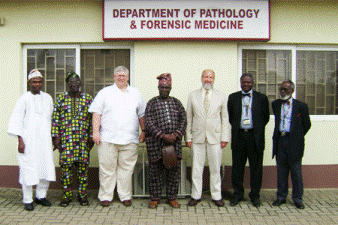Natural Resources, School of
Date of this Version
1987
Document Type
Article
Citation
J. Parasit., 73(3), 1987, pp. 630-639
Abstract
Examination of coprolites excavated from archaeological sites in the Americas demonstrates excellent preservation of helminth eggs and, in some cases, larvae. To gain an understandingo f helminth parasitism in prehistory on the Colorado Plateau of Arizona, New Mexico, and Utah, 319 coprolites from 5 archaeological sites were analyzed. Helminth eggs and larvae were recovered after the coprolites were rehydrated, screened, and sedimented. At a sixth site, soils excavated from 5 rooms used as latrine areas were processed with palynological techniques. The results indicate that all but 1 of the prehistoric populations examined were infected with intestinal worms. The helminths implicated are Enterobius vermicularis, Trichuris trichiura, cf. Ascaris lumbricoides, cf. Trichostrongylus sp., cf. Strongyloides sp., taeniid cestodes, and hymenolepidid cestodes. The study suggests that prehistoric hunter-gatherer peoples carried fewer helminth parasites than agriculturalists. At 1 site, it appears that increased helminth parasitism preceded abandonment of the village.


Comments
Copyright American Society of Parasitologists 1987. Used by permission.